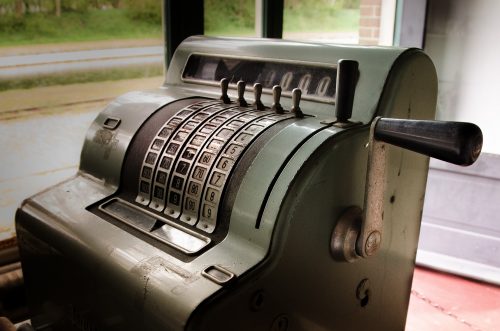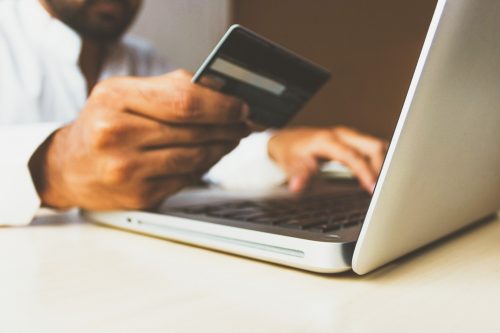A point-of-sale (POS) is the time and place of a purchasing transaction. When you pay for goods in a physical or online store or a meal in a restaurant, you are completing a POS transaction. POS systems are technologies that automate such transactions and analyze them for business purposes.
 The simplest point-of-sale device is the standalone cash register.
The simplest point-of-sale device is the standalone cash register.
A POS transaction occurs, for instance, when a sales clerk rings up a sale on a cash register and the buyer pays for the product or service. The clerk issues a receipt containing details of the purchase to the buyer. The merchant also keeps a record.
POS transactions may also be of interest to other parties, such as the government, especially if a sales tax is involved. The time and place of payment is key information for the tax collector.
A growing number of purchases now take place at virtual or online sales points. For these purchases, buyers use a computer or mobile device to pay for their goods or services by means of a payment card.
POS systems
When people talk about POS, they are usually talking about the devices or systems that process sales transactions.
The simplest POS device is the cash register. This is typically a standalone machine that records transactions and issues receipts. Many of these devices are electronic and may also calculate tax, scan barcodes, and generate sales reports.
Stand-alone electronic cash registers are ideal for small shops and kiosks. They are also useful entry level machines for start-up businesses.
At the other end of the scale, is the computerized POS system with many terminals capable of processing different kinds of payments. These terminals have onboard programs for different functions, such as reading payment card information. The more modern terminals are portable and capable of processing contactless payments either from cards or mobile devices.
The more sophisticated POS systems do more than manage sales. As well tracking transactions, they can analyze sales data and interpret what they mean to the business. They help to answer key questions, such as:
- Who are our most loyal customers?
- Which products do we sell most of?
- What do our customers think of our business?
- Which products do we need to restock?
- Which of our sales staff make the most sales?
Opportunity to impact buyer behavior
Marketers are very interested in the siting of POS terminals. For instance, shops have learned to put these near exits because doing so raises the number of impulse buys that consumers make as they leave.
Merchants also see the POS as an opportunity to increase customer loyalty. Business researchers are very interested in how this final stage of the purchasing journey influences buyer behavior.
An obvious factor of interest is the format of a POS. Dr. Ian Bushell, a senior lecturer in psychology at Glasgow University in Scotland, discusses this in a 2017 white paper titled Human behaviour at the point of sale. He conducted the research for payment solutions company Verifone.
Bushell explains how different types of POS devices may meet different needs. He gives the example how the “embarrassing” purchase “can be a motivator for shoppers to choose self-service and cash.”
 Many POS transactions now occur online at virtual sales points. Image from Pixabay
Many POS transactions now occur online at virtual sales points. Image from Pixabay
Components of POS systems
POS systems contain hardware and software. The hardware is the bits you can touch, such as terminals, cables, plugs, printers, scanners, and computers. The software is the invisible intelligence of the system. It sits inside the hardware and records, processes, and organizes the storage of sales information.
The systems typically fall into two categories: on-site data storage and cloud-based.
On-site storage means that all the data that the POS system registers and analyzes resides in servers that sit in the merchant’s own premises. Cloud storage means that the data is stored online on servers provided by a third party that looks after the POS system.
Some firms may also opt for hybrid systems that have both cloud and local storage.
Here are some of the typical hardware components of a POS system:
- Transaction registers – such as touch panels, mobile devices, or cash registers.
- Barcode readers – these scanners are common in stores with many different products and often link with inventory software that updates stock levels.
- Cash drawers – for storing takings, receipts, and other accounting notes.
- Printers – for issuing customer receipts and cashing up reports.
- Card readers – for processing payments made by credit or debit cards, or mobile wallets. They connect to banks – either by landline, mobile, or Wi-Fi – to process the payment.
- Network devices – such as routers, to link the hardware components to a central computer, the internet, and cloud storage.
